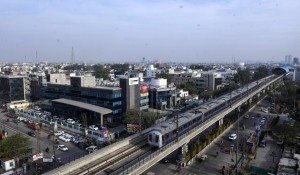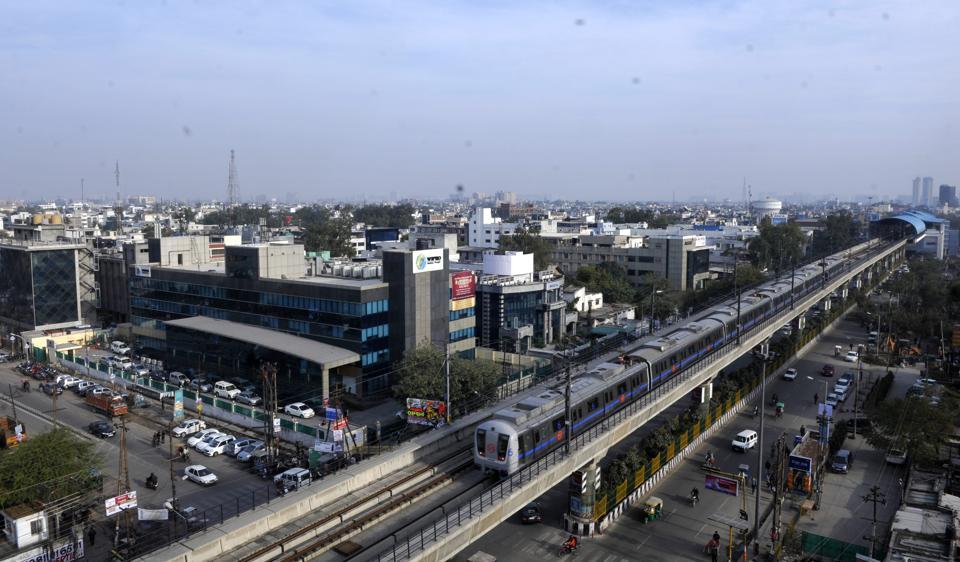Bottom Line: Prima facie, there is nothing identical between Noida of Delhi-NCR and Bandra-Kurla Complex (BKC) of Mumbai to be referred on the same page. However, a closer look suggests the two given markets have the same DNA with different tale to tell.
 The reason why these two markets have evolved as two contrary case studies of urban development is the policies by the respective urban bodies – Noida Authority and the Mumbai Metropolitan Region Development Authority (MMRDA).
The reason why these two markets have evolved as two contrary case studies of urban development is the policies by the respective urban bodies – Noida Authority and the Mumbai Metropolitan Region Development Authority (MMRDA).
It is the roll out of the policies by the respective urban bodies that have been behind the BKC emerging as a case study of urbanisation with booming economy while Noida ending up as a ghost city sitting over piles of unsold housing stock. Both the markets nevertheless had the tremendous potential in its early stage of inception.
In terms of the infrastructure, potential of the region and overall location advantage, both these places have more or less the same advantages. These are brilliant locations – geographically well-located and driving distance to all the major hubs. As a matter of fact, purely from the standpoint of physical infrastructure Noida is even better positioned than BKC, yet it stands nowhere near the later in terms of growth potential and the overall attraction index.
Analysts point out that availability of land at such strategic locations is always a bog traction point. But what comes in the way of sustainable development is often the greed. When the urban bodies are not that sound in terms of sustainable planning and also lack the research, they prove to be urban disaster. Noida is a classic case study of performance not matching the potential. The BKC, on the other hand, has outperformed its potential due to supply always in sync with the demand.
Naushad Panjwani, Managing Partner of Mandarus Partners points out that research cannot be undermined but even with research that suggests the potential of the region there are several underlying factors to be evaluated. Not just market, even within a project if you have two and a half room then you have to find what would be that half room – whether puja room, study room, kids room – because based on that only the architect will design the location of that room.
“Look at the BKC where the land is there with the MMRDA but they are releasing in phases because they first want to make sure that absorption is there for the current lot and then only they want to auction more land. In Noida there was need to do something like that; to release the land in phases. But greed has played its role in exceeding supply more than the demand,” says Panjawani.
Nikhil Hawelia, Managing Director of Hawelia Group agrees that over-supply has indeed killed otherwise promising location like Noida. According to him, the assumed demand in Noida without being backed up with any scientific research that could lead to right sizing the project offerings resulted into creating a housing inventory that may take years to get absorbed.
“You have to understand that the homebuyers were coming to Noida because they could not afford in any other market like Delhi or neighbouring Gurgaon. So, it was not just the price in terms of per sq feet cost but also the overall ticket size that should have been kept in mind. I must admit here that with the availability of cheaper land parcels the developers got a bit carried away for creating bigger apartments,” says Hawelia.
Requesting anonymity, even the officials of Noida Authority admit that they did not have any research to define the demand or understand the sustainability of the market. So, while there has been a right mix of residential projects and commercial spaces in BKC, Noida could only develop residential apartments with no economic activity in the vicinity.
Therefore, Noida could neither attract affordable buyers due to supply of bigger units, nor could the city attract the well-to-do homebuyers who preferred to stay close to their workplaces in Delhi or Gurgaon. The BKC, on the other hand, evolved as a case study of urbanization with sound economic activity due to the right mix of residential and commercial spaces in the neighbourhood.
By: Ravi Sinha





